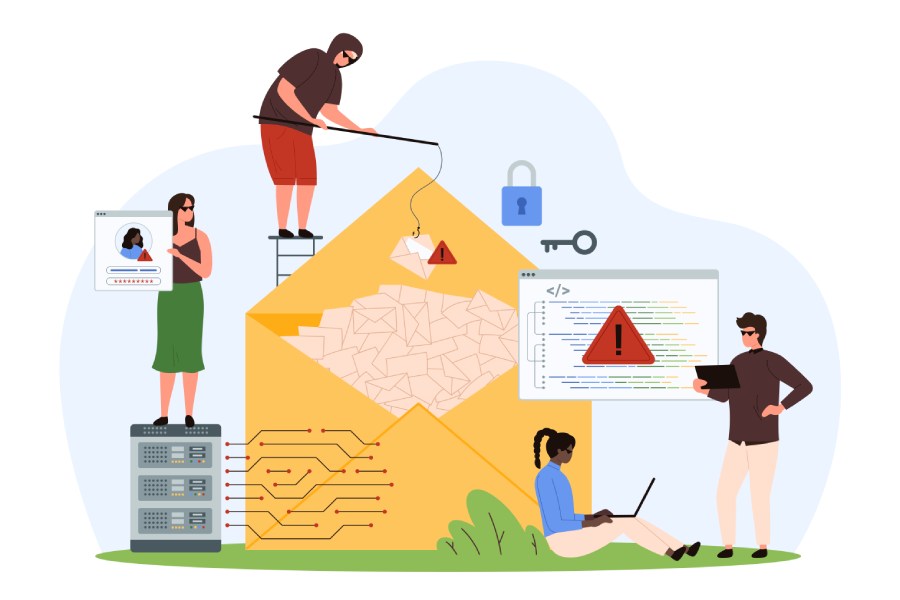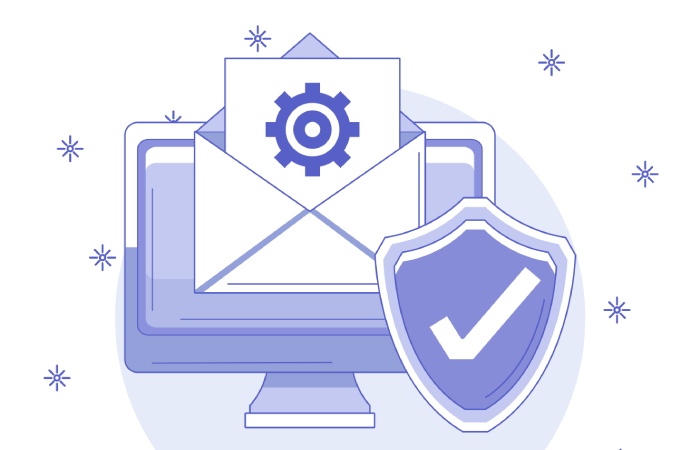Email services will not be outdated anytime soon as most businesses still prefer it to be their primary means of communication. However, as 4.6 billion people will be using emails by 2025, there is an alarming rise in email impersonation attacks and email security risks. In a single case in Colombia, $8 million was compromised by malicious actors in a recent example of an impersonation attack.
What is an Email Impersonation Attack, And How Does it Work?
An email impersonation attack is a form of Business Email Compromise. Malicious actors send emails to individuals responsible for handling finances in organizations. Typically, victims are tricked into believing that they have received a legitimate email and tend to act on the instructions in the email to transfer funds to a specified account. An email impersonation attack involves either email spoofing or an account takeover. Such crafted emails are sent to steal account credentials and defraud individuals or businesses, indicating a need for email security and phishing protection. As the workforce around the world continues to work remotely following the COVID-19 pandemic, impersonation attempts have increased as adversaries could easily target individuals.
How to Recognize an Impersonation Attack?
The key to reducing impersonation attacks is to recognize them. However, with such well-crafted emails, email security also must be adequately robust. Nevertheless, such emails can be identified by anti-phishing services and even by email users while looking for the following cues:
- The message will have an urgent tone: The attacker will add pressure with urgency-inducing language so that the victim will act with no time for further thinking.
- The requests may be uncommon: Most organizations have specific procedures and checks in place. However, these emails might ask victims to skip those checks, given the urgency.
- Confidentiality will be emphasized: As privacy is paramount for organizations, attackers take advantage of it successfully so that victims do not discuss the email with their colleagues.
- Email addresses will be incorrect: Adversaries change their email addresses to get into their victims’ inbox and appear legitimate successfully.
Tackling Email Impersonation Attacks
Apart from evaluating the nature of the email contents, it would help if you also implemented specific additional protective measures and checks to reduce impersonation attacks efficiently. Following are some of those ways:
- Check for errors in email addresses and sender names: There are tools available today that could help you flag suspicious email addresses. The errors in these suspicious emails may include changes to spelling, visual similarities, emails from personal accounts, and descriptive modifications to the sender names. In some cases, the display name might appear to be legitimate. However, hovering or clicking on the display name might reveal a different address or a slight deviation from the real one. Therefore, you must check for such errors before replying to the email.
- Deploy an email security solution: Sophisticated phishing attacks, such as email impersonation attacks, require modern email security solutions, including ransomware protection and anti-phishing services. As we enter into a new cybercrime era where adversaries use Phishing-as-a-Service (PhaaS) tools, spear-phishing emails quickly get past traditional security solutions. Therefore, an efficient email security service must offer checks for domain spoofing and impersonation and provide guidance on incorporating email security protocols such as DMARC, DKIM, and SPF.
- Enable visual clues for emails from outside the organization: Email services such as Microsoft 365 offer users and organizations a unique feature. This feature allows a user to add a disclaimer for emails arriving from outside the organization, i.e., external emails. It warns employees while opening external emails and keeps them from opening malicious links or attachments. Visual clues help read an email cautiously and avoid clicking on malicious links and attachments. Therefore, such visual clues that flag external emails are an efficient step to counter spoofed emails.
- Implement anti-phishing services: Anti-phishing services scan the entire email, including subject, body, links, and attachments, to verify whether the email is a malicious one. These services protect users from spear phishing and other types of phishing threats such as email address spoofing. These tools check for threats in real-time and block any malicious content that may pose a phishing threat to an individual or an organization. They include spoof intelligence, anti-phishing policies, allowing or blocking spoofed senders, and email authentication.
- Employee training and awareness: Employees are likely to fall prey to phishing attacks and jeopardize their organizations as it is easy for malicious actors to take advantage of human vulnerabilities. A recent KnowBe4 study has shown a decrease in the phish-prone percentage by more than 60% due to employee training. This report reflects that employee training and awareness have come in handy for organizations to increase their email security posture. If kept untrained, employees can become a risk, and when trained adequately, they can help thwart the majority of phishing attempts. Therefore, organizations should ensure employee training to plug all vulnerabilities from within.
- Reporting suspected email impersonation attacks within the organization: Finally, the individuals within an organization should report anything suspicious regarding email security. If individuals feel that email impersonation or spear phishing is a potential case, they should immediately report it to their higher authorities. Prompt reporting will ensure that the organization stays updated on all types of threats to their email security. A strict reporting strategy is a strong shield for any organization that looks to reduce the risk of email impersonation attacks.
Conclusion
Email security is paramount to any organization’s operations due to the heavy reliance on email services for communication. Therefore, organizations should ensure complete email protection services, besides email hosting and email archiving. Enterprises and their security teams must stay updated with the latest phishing protection and ransomware protection tools.
Organizations must effectively counter phishing threats such as email impersonation attacks by implementing the above-listed protective measures. Lastly, no security tool can offer all-in-one protection for any organization. Therefore, multiple safeguards at multiple layers serve as the best principle for attaining a robust email security posture.


